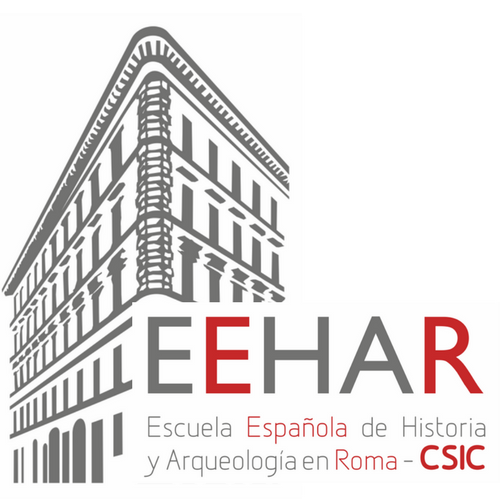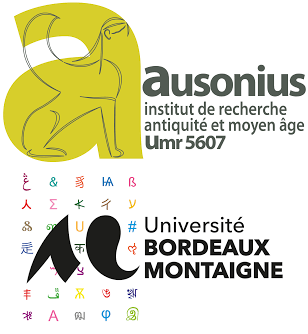«Límites y territorios de la Bética romana» was a FPU-MECD 2012 Predoctoral Project (May 2012- July 2017).
Universidad Complutense de Madrid (with visiting fellow periods at the University of Southampton and the CIL Center of the Berlin-Brandenburgische Akademie der Wissenschaften)
Funded by the FPU call (Spanish Ministry of Culture and Education)
PhD thesis defense the 3rd July 2017. Summa cum laude. Extraordinary PhD award to the best thesis of Archaeology (UCM)

Description
The creation of the province of roman Baetica is to become administrative a previous political process that started in the late Republic. This synthetic creation was derived from the division into two parts a territory that was only one until 16-13 B.D. (former Hispania Ulterior). The construction of this new territorial model was a complete proposal thought at one and it had to deal with a lot of diverse factors. This new entity recover the idea of Turdetania but it develops into Baetica, that is not the same concept. Baetica was a territory with a different meaning, comparing with Lusitana, whose name and concept were focused on the ethnic population of lusitanii, or Tarraconensis, whose name and concept were created around its capital, Tarraco. From a symbolic point of view, the republican system of names (Ulterior and Citerior) evidence the strong hodological perception at this times. With the new model of territory evolved in the age of Agustus, the new concept of Baetica acquired its axe of identity from the river that gives coherence and agricultural richness. The new concept combines different spaces and simplify them in order to provide it a new meaning inside the new administrative territory.

Taking all these ideas into account, the text of this thesis integrates several methodologies and theoretical approaches related to postmodern theory. This allows me to elaborate an analysis of an imposed construction of space to reinterpretate with the evolving colonial process of administrative reorganization of Hispania, specially Baetica.
The main aim of this research is to elaborate an exhaustive analysis of territorial organization of this province. I focus on the process of conception and configuration from the former administrative structures. This suppose a challenge of understanding the causes of integration of all these territories. This is the clue to design more accurate map of the land. This topic has previously studied, but the new thing of this thesis is based in two points: on the one hand, it is to clarify the location of baetican cities attending to empirical proves; on the other hand, it is to understand and valuate socio-political processes happened with all this project.
With the purpose of restudying this well-known evidences, I did previous considerations to understand better the concept of limit in the Roman world. Likewise, I could create a contextualising framework to allow a wider appreciation of symbolism of liminal spaces in the Roman mind through epigraphy, archaeological evidences and the Classics.
I did this research from a macrorerritorial point of view. In a huge space as a provincial territory, documentation is overwhelming in general approaches but it is scarce in some specific points. There are monographic studies as good precedents but all of them are out-of-date. There are also several studies focused in some concrete aspects but they were not taken the global process into account. This doctoral research has reconciled microterritorial approaches with those that analyse these aspects with a global perspective. These data have been studied with the tools of Landscape Archaeology and a complex theoretical framework. It has allowed me to understand processes of deterritorialization of the former province of Hispania Ulterior and to construct, reterritorialize and convert a mix of spaces and landscapes into an administrative space named by one new label. I also reinterpreted of territorial subdivisions of provinces such as conventus iuridicii.
Epigraphic evidenced have taken a lot of importance in the administrative interpretation of landscapes. Notwithstanding, other used tools were numismatic (to analyse Republican mints), paleohispanic toponymy (for understanding ethnical reconfiguration processes), roads and milestones (from an archaeological and administrative point of view) and legislation. To summarise, multidisciplinary approaches has allowed me to explore new methods and to understand better these processes.

Moreover, this thesis pretends to solve some evident lacunae in the knowledge of Roman Baetica, to update data and interpretations and, in conclusion, to show the process of creation of this province and the configuration of its spaces and limits.
Otputs
ESPAÑA-CHAMORRO, S. (2020), Unde incipit Baetica. Los límites y la integración territorial de la Baetica desde Augusto hasta Diocleciano. (in preparation)
ESPAÑA-CHAMORRO, S. (2019), “El extremo occidental de la Baetica y la vía XXIII Ab ostium fluminis Anae- Emerita del Itinerario de Antonino”, Pyrenae 50.2, (—).
ESPAÑA-CHAMORRO, S. (2019), “Corpus Milliariorum Baeticae. Miliarios y política viaria en la Hispania Ulterior Baetica en época imperial (s. I-IV)”, Archeologia Classica 69, (—).
ESPAÑA-CHAMORRO, S. (2019), “El eje viario Astigi-Malaca: una visión diacrónica a través de la epigrafía viaria”, Lucentum, 38, (—).
ESPAÑA-CHAMORRO, S. (2019), “Item de Esuri Pace Iulia. Los problemas de la vía XXI del Itinerario de Antonino y el límite entre la Baetica y la Lusitania”, Dialogues d’Histoire Ancienne 45/1, (—).
ESPAÑA-CHAMORRO, S. (2019), “El lapidario del III Duque de Alcalá de los Gazules. Apuntes sobre CIL II, 4962, CIL II, 1211 y otras noticias epigráficas”, Anuari de Filologia. Antiqua et Mediaeualia 7, (—)
ESPAÑA-CHAMORRO, S. (2018), “La frontera occidental de la Baetica con la Lusitania: (Ad) Fines, Serpa, Moura y la invención historiográfica de Arucci Nova”, Rivista Storica dell’Antichità 48, 229-255.
ESPAÑA-CHAMORRO, S. (2018), “Laci(ni)murga: ¿originalidad o duplicidad toponímica”, Espacio, Tiempo y Forma: Serie II. Historia Antigua 31, 51-72.
ESPAÑA-CHAMORRO, S. (2018), “Miliarios y límites provinciales: Algunas reflexiones sobre el miliario de Mengíbar CIL XVII/1 93 y la frontera oriental entre la Bética y la Citerior”, Epigraphica 80, 211-228.
ESPAÑA-CHAMORRO, S. (2017), “El paisaje epigráfico viario de la via Augusta. Consideraciones de la jurisdicción de los conventus iuridici y la epigrafía miliaria”, Florentia Iliberritana. Revista de estudios de Antigüedad Clásica 28, 29-49.
ESPAÑA-CHAMORRO, S. (2017), “Cuarto miliario bético de la serie Hadrianus Agustus Fecit hallado fortuitamente en La Rinconada (Sevilla)”, Cuadernos de Prehistoria y Arqueología de la Universidad Autónoma de Madrid 43, 241-250.
ESPAÑA-CHAMORRO, S. (2017), “Los Capita Viarum de la Baetica”, Anales de Arqueología Cordobesa 28, 11-32.
ESPAÑA-CHAMORRO, S. (2017), “Pedagogía del poder imperial en el espacio rural bético a través de los miliarios”, Potestas. Revista de Estudios del Mundo Clásico e Historia del Arte 10, 31-48.
ESPAÑA-CHAMORRO, S. (2017): “Poder y Territorio. La política territorial y viaria en la Baetica de Augusto a Adriano” en VV.AA., Formas, manifestaciones y estructuras del poder político en el Mundo Antiguo, Editorial: UAM Ediciones, 333-350, ISBN 978-84-617-6758-8.
DUCE PASTOR, E.; ESPAÑA CHAMORRO, S. (2014): “La protección de un hito del territorio: Piedra Escrita, estado de la cuestión y propuesta de musealización”, Actas de las VII Jornadas de Patrimonio Arqueológico de la Comunidad de Madrid. BOCM. Madrid. 337-345. ISBN: 978-84-451-3473-3.
ESPAÑA-CHAMORRO, S. (2014): “Roman Provincial Boundaries. A Multidisciplinary approach to the specific case of Baetica”, en P. Krištuf, D. Novák, P. Tóth & D. Vokounová Franzeová (eds.) Student Archaeology in Europe, 50-57. ISBN 9788026104209
ESPAÑA-CHAMORRO, S. (2013): “The Roman Republican Walls as a way to create the Hispano-Roman Identity in the Iberian Peninsula” in L. Bombardieri, A. D’Agostino, G. Guarducci, V. Orsi and S. Valentini (eds.), Identity & Connectivity, Proceedings of the 16th Symposium on Mediterranean Archaeology (Florence, 1-3 March 2012), Oxford, British Archaeological Reports. International Series 2581 (II) 2013, Archaeopress, 983-990 ISBN: 978 1 4073 1205 7
El Guadiana y la frontera hispano-lusa: estudios, perspectivas y proyectos de investigación. Universidad de Sevilla (Sevilla, España). 29 de noviembre de 2018
Ponencia: El Ana (Guadiana) en la administración territorial romana: la dicotomía entre límites provinciales y espacio de confluencia
Seminario docente di scienze dell’Antichità e del tardoantico. Università di Bari (Bari) 18-22 abril 2016
Ponencia: Formazione provinciale, amministrazione e legislazione delle provincie della hispania
Ponencia: Città della Baetica e il suo collegmento territorial
V Jornadas de Investigación En Historia Antigua: Formas, manifestaciones y estructuras del poder político en el mundo antiguo. Universidad Autónoma de Madrid (Madrid) 27 de noviembre 2015
Paper: Poder y territorio. La política territorial y viaria en la Baetica de Augusto a Adriano
África y el Mediterráneo en época clásica. Universidad Complutense de Madrid (Madrid) 24 de noviembre 2015
Ponencia: Sobre la conciencia cívica y la idea de la Bética como provincia
Roma Aeterna. Universidad de Navarra (Pamplona) 24 de octubre 2015
Ponencia: Las piedras que guían el camino. La epigrafía miliaria de la Bética en los siglos I-III
Poster: “Fines Provinciae Baetica. Exploring new approaches to borders of a Roman Province”
Seminario de Imaginarios en el Mediterráneo Antiguo. Madrid. 5 de noviembre 2014
Ponencia: ¿Identidad provincial en la Hispania Ulterior Baetica?
II Giornate Internazionale. Palazzo Bourbon (Monte Santa Maria Tiberina, Italia) 2 de julio 2014
Ponencia: Identità provinciale nella Baetica? Appunti sulla riconfigurazione del paesaggio, le implicazioni sociali e l’amministrazione provinciale romana.
Archaeology of Iberia: State of the Field. Brown University (Providence, R.I.) 28 Febrero- 1 Marzo 2014
Poster: Between the boundaries: Problems and perspectives of the regio Baeturia
Frontiers of the European Iron Age. University of Cambridge (Cambridge) 20-22 de septiembre 2013
Poster: Combined Geographies and Colonial Landscapes in Iberia: The case of the provincial borderland so-called Baeturia
19th European Asociation of Archaeologist Anual Meeting. University of West Bohemia, (Pilzen, República Checa) 4-8 de septiembre 2013
Poster: “Religious Roman Seascapes in Province of Baetica (Conventus Gaditanus)”
Ponencia: “Roman Provincial Boundaries. A Multidisciplinar approach to specific case of Baetica.”
12th Symposium on Mediterranean Archaeology (SOMA): “Identity & Connectivity”, 1 de marzo de 2012. (Florencia, Italia).
Comunicación: “The Republican Walls like a generator of Roman Identity in the Iberian Peninsula”
VIII Jornadas de Patrimonio Arqueológico en la Comunidad de Madrid, 19 de noviembre de 2011 Museo Arqueológico Regional. (Alcalá de Henares, España)
Comunicación: “La protección de un hito del territorio: Piedra Escrita, estado de la cuestión y propuesta de musealización”




Deja un comentario